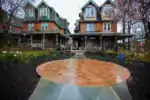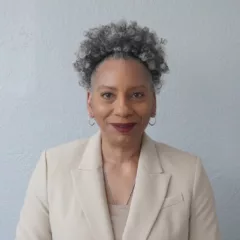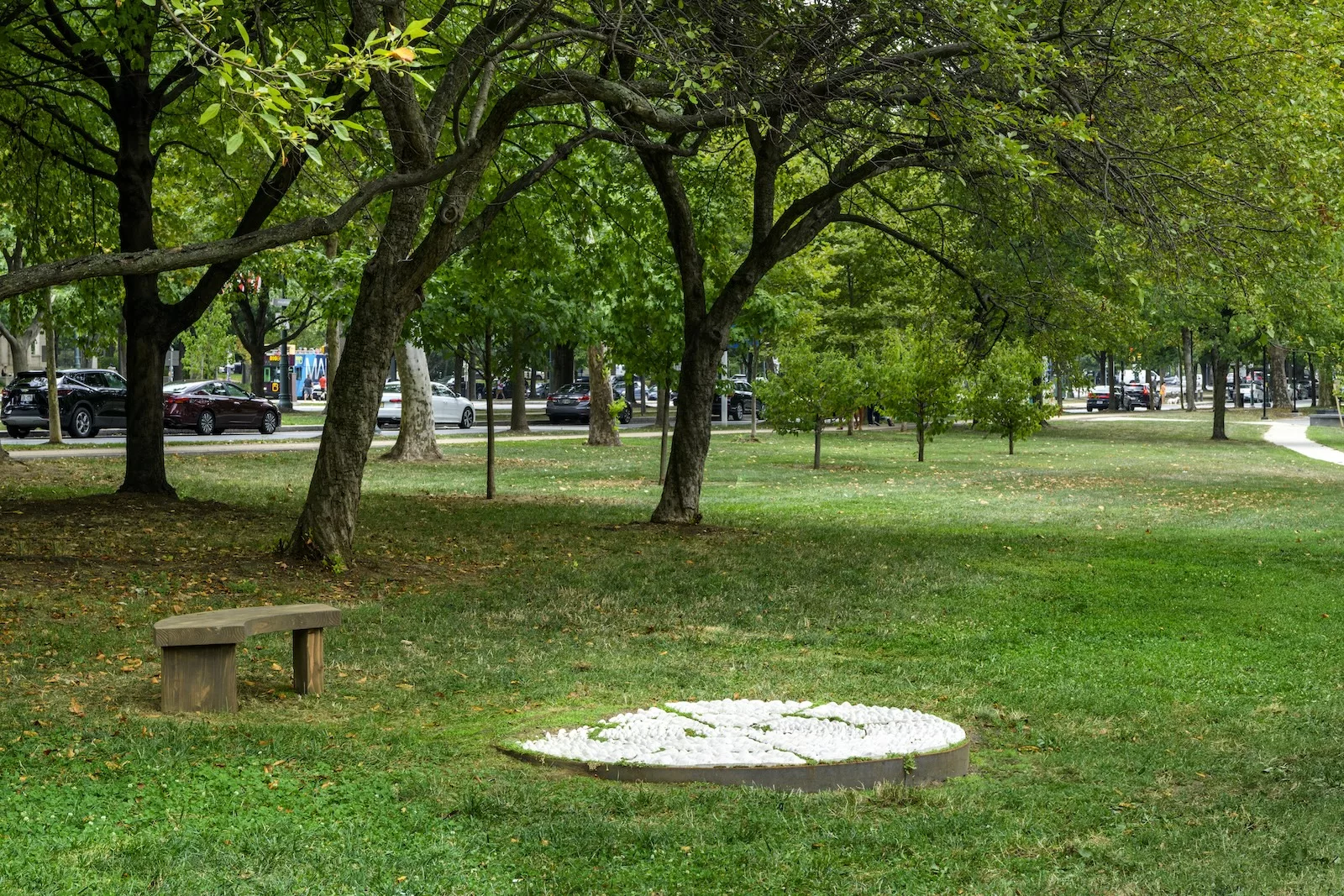
Joyce Chung talks with Rachel Hsu on her newly commissioned public art “The Weight of Our Living,” which continues her ongoing approach to translate various kinds of desire into a form of bodily sensation.
Rachel Hsu asks “How do we constantly change the way we speak or behave to survive together?”
One night, Hsu sent me a poem “To the Fig Tree on 9th and Christian” by Ross Gay, who “by no small measure saved her spirit.” Standing in South Philadelphia a little down from Christian Street in the house next to a church, the fig tree, as Gay describes, provides a space where “strangers maybe/ never again” are picking figs and feeding each other, rubbing their sweaty forearms with each other’s sweaty shoulders.
Just as the fig tree connects people, “The Weight of Our Living” by Rachel Hsu welcomes people to engage with a bumpy surface of the work made of carefully selected rounded stones. Inspired by the stone footpaths in Taiwan’s public parks, the work is designed to apply pressure to different points on the bottom of the foot. “What I find fascinating is that a single point in your body impacts other parts such as your liver, lungs, or heart that again impacts all other things. It is amazing how all of these other things are at play and connected in a singular body,” says Hsu. In reflexology, the pressure is believed to bring health benefits such as increased blood circulation and stress reduction. But this is not the sole reason that visitors are encouraged to interact with the work with their shoes off. By enduring the pain in their feet, people acknowledge their needs—an intimate connection with their bodies, the park, and the things surrounding them.
I first reached out to Rachel Hsu last year to request a studio visit after I saw her solo exhibition at Practice Gallery in Philadelphia. A little over a year later, here we are, at her studio in Olde Kensington with the air feeling heavy and overwhelming, wondering why this season has felt more brutal. Hsu conceived “The Weight of Our Living” as she was navigating her feelings towards the current genocide in Gaza, the oppressive heat of what people call “the hottest summer yet,” and the annual rise in gun violence that accompanies summer months. Previous to this work, “Tending” (2021) and ”Love, If We Can Stand It” (2022) are her earlier attempts to make pieces referencing a footpath after the 2021 Atlanta spa shootings took place where eight Asian women working at a massage parlor were murdered. Realized on a smaller scale measuring 4 x 26 x 26 inches, ”Love, If We Can Stand It” was included in a group show at AUTOMAT in Philadelphia two years ago. In these works, the artist is not advocating that her work can heal people from the violences, but aims to create a space for people to recognize and sink into their desire accompanied by deep-seated feelings such as anger, grief, and love.
Desire is generally considered a perceptual experience of value and therefore intangible. But our bodily response to desire can be felt or may be perceivable. Hsu invites viewers to interact—over time—with her work, encouraging reflection on the theme of endurance, understanding that time and endurance can allow the recontextualization of perception. Hsu’s work reminds us that the experience of physical force and stimulation can function as a process of desire, revealing the strange, often poetic, gaps in a human understanding of the world.
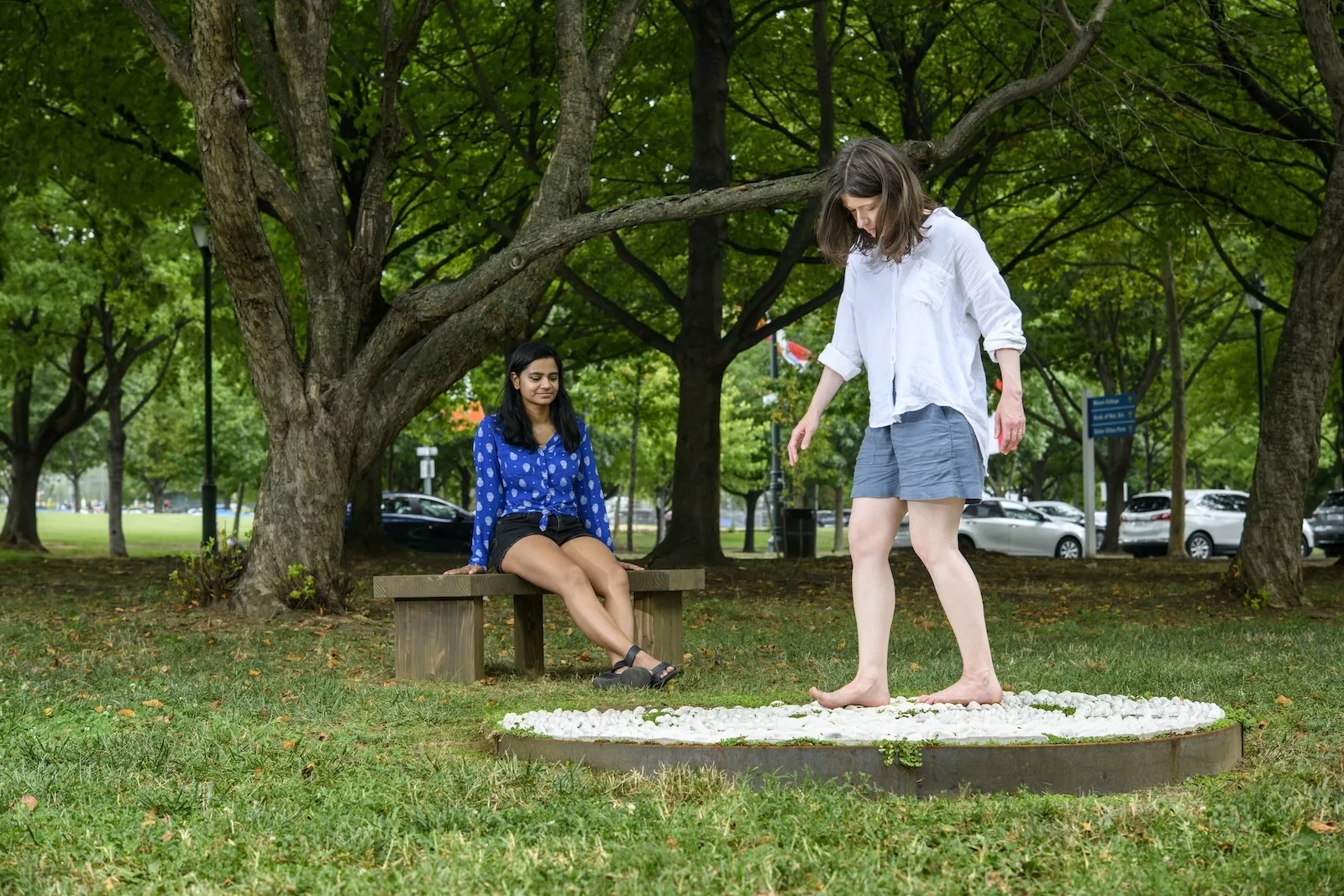
Fundamental to Rachel Hsu’s discriminating point of view on desire is understanding how two seemingly opposite ideas are interrelated to each other. Hsu explains that reflexology is tenderizing the body in an effort to make it softer through an acute kind of pain. “To be tender is to be soft, but to tenderize a piece of meat, you have to hit or knead it forcefully. I am dissecting how tenderness is related to violence. Something soft that arises from a kind of brutality.” In her work, enduring the aches—an almost ritualistic act Hsu sets up for the participants—illustrates elegantly how desires for wellbeing, rest, and connection are revealed through the inherent dualities of tenderness.
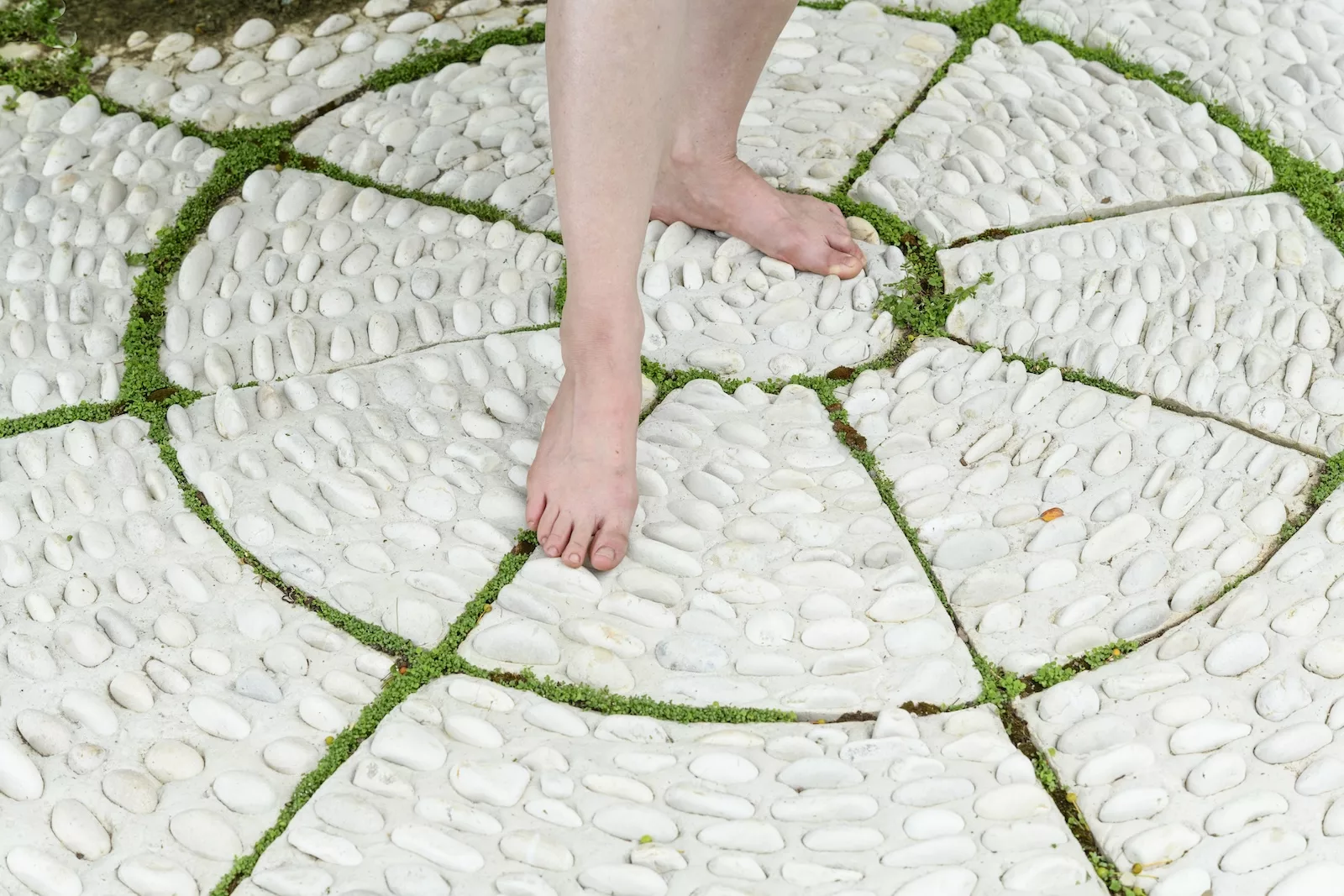
Hsu’s interest in materializing various forms of desire that emerge from an experience over time in a place, has persisted and carries over unabated into her art and writings.
“The Heart Bears a Blade” (2023), showcased at Practice Gallery in Philadelphia last year, is an eloquent illustration of how Hsu uses language as a proxy to communicate the complexities of desire born out of cultural differences. Consisting of the Chinese character 忍 (endure, bear, tolerate) painted in reverse on the wall and reflected in its correct orientation by the dance mirrors hanging opposite, the work portrays the specific order and direction of each stroke. Alongside this, an audio recording of a reimagined language lesson that incorporates the word for endure plays in the gallery, oscillating between English and Chinese. The recitation depicts both the brutality of violence and the beauty of connection:
“Somewhere the sound of gunfire sliced the air again. I know you’re exhausted, but you must hold on for a while longer.”
“It’s finally Autumn. I watch the dappled light kiss your upturned face and I can’t help but smile.”
Here, the gaps between the two languages that are somewhat elusive and unsettling are translated to the movements of our bodies following the direction of each stroke, unlocking new pathways to dealing with the experience of violence and joy. This entire practice of processing emotions deepens our compassion and connection for each other which is what grieving may entail.
The complex feelings of unease, discomfort, and struggle that stem from Hsu’s work might convey a common touchstone rooted in the question of care and violence: What kind of care do we need in the aftermath of violence? Hsu’s practice shrewdly opens the door to investigating the ways in which caring operates. “All Hands” (2023), the ghostly construction of a boat and keel made of calligraphy practice paper, for instance, addresses the invisible labor and sacrifice in communication. Borrowing from the idea of a keel normally used to balance a ship, “All Hands” poses questions about a stabilizing force, such as language, that constantly has to do the work and adjust to the exterior forces. Hsu’s exploration of conditions of living together invites the viewers to a thoughtful reflection on their surroundings and communities and what they need from each other.
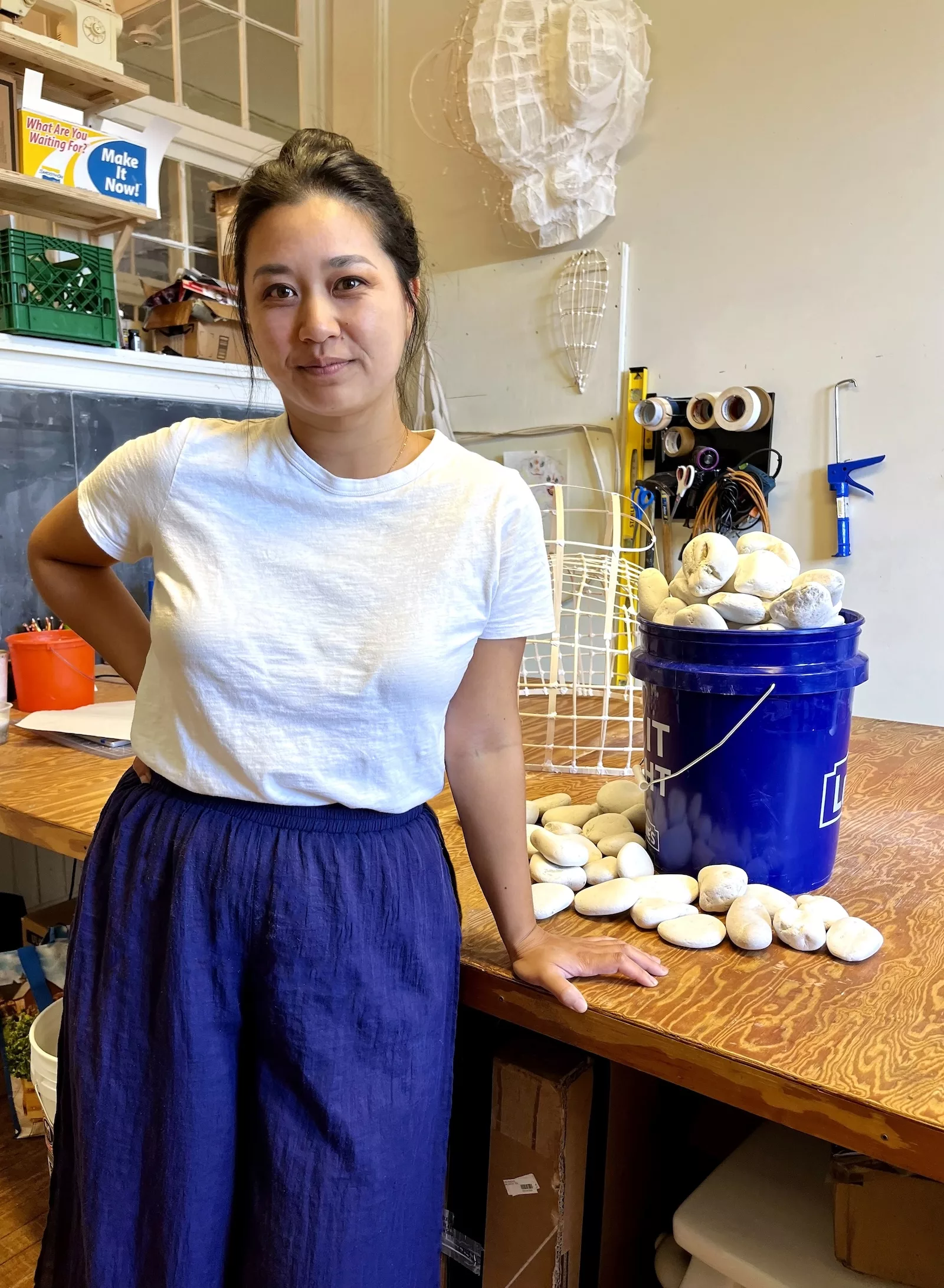
In an era creaking under the weight of violence that often manifests itself as a rigidity of ideology, identity, and politics, the significance of grieving easily remains forgotten or sidelined. Rachel Hsu’s work unfolds a perceptual dimension of desire in relation to the body as a place where violence is questioned, grief is processed, and compassion is developed. Obviously, these are fundamental components of healing and community building deeply inherent to the human condition, which may save our spirits by no small measure. Run down to Maja Park and experience how Hsu’s work transforms the public park into imaginative hopes. The bench next to the stone piece is a part of the work where you can take a pause and give your mind and body a little rest.
“The Weight of Our Living” is currently on view through October 27 at Maja Park on the Benjamin Franklin Parkway in Philadelphia. The work won the inaugural edition of Art on the Parkway Open Call, a juried competition co-organized by the Association for Public Art (aPA) and the Parkway Council in partnership with Philadelphia Parks and Recreation (PPR). I was fortunate to be one of the jurors for this year’s Art on the Parkway.
Artist Talk by Rachel Hsu, Sept. 17, 2024, 6pm-7:30pm, at Asian Arts Initiative. Free. Tickets here.
This talk is in conjunction with APA’s 152nd Annual Meeting.
Joyce Chung Bio
Joyce Chung is the Curator at Asian Arts Initiative in Philadelphia. Her curatorial interests include media art, performance, intersections of feminism and visual arts, and identity politics in Asian and Asian American art. Joyce seeks to examine how Asian Diaspora artists develop practices responding to the US’s history of immigration and the Asian American art histories that underpin struggles of decolonization. She previously worked at a number of museums and galleries both in Seoul and New York, including the National Museum of Modern and Contemporary Art, Korea, Hyundai Card, Kukje Gallery, as well as for the Gwangju Biennale and Performa, New York. Joyce studied art history at Wesleyan University and the University of Chicago. https://www.linkedin.com/in/joyce-chung-2928104a/
https://asianartsinitiative.org/news/welcoming-joyce-chung-as-curator
About the Artist
Rachel Hsu (b. 1992, Seattle, WA) is an interdisciplinary artist working in visual art, language, and poetry. Hsu misses the infinite deep blue of the Pacific Ocean that connects her family in Seattle to her family in Taiwan. Currently residing in Philadelphia, the artist teaches at the Tyler School of Art and Architecture where she earned her MFA in sculpture in 2021. Hsu received her BFA in sculpture from Western Washington University in 2015. With extraordinary elegance and sensitivity, Hsu’s work navigates our inner needs and appetites and evokes human’s desire to connect, integrating physical movement as a part of acknowledging and processing emotions. Visit the artist’s website.




